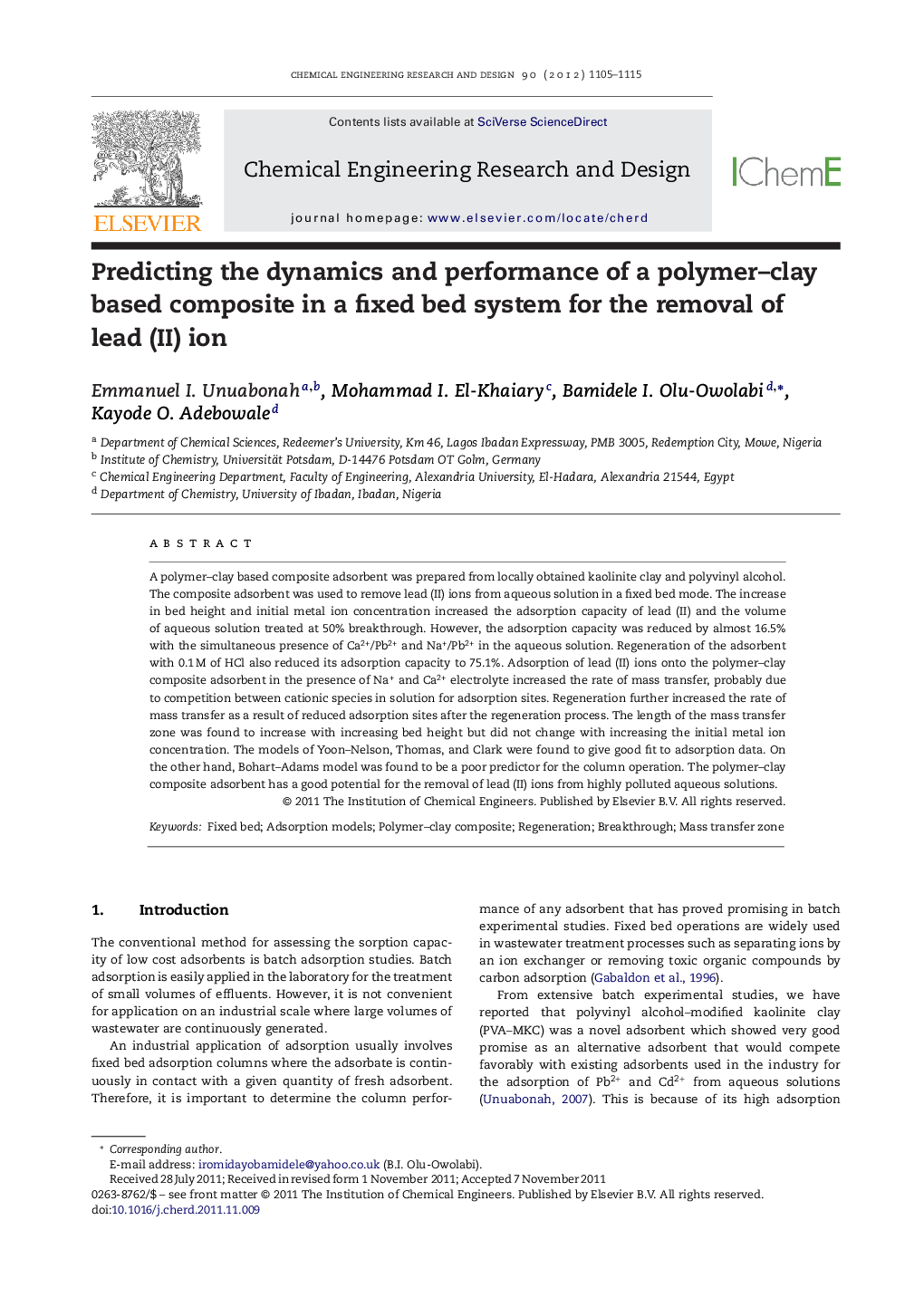| کد مقاله | کد نشریه | سال انتشار | مقاله انگلیسی | نسخه تمام متن |
|---|---|---|---|---|
| 621804 | 882577 | 2012 | 11 صفحه PDF | دانلود رایگان |

A polymer–clay based composite adsorbent was prepared from locally obtained kaolinite clay and polyvinyl alcohol. The composite adsorbent was used to remove lead (II) ions from aqueous solution in a fixed bed mode. The increase in bed height and initial metal ion concentration increased the adsorption capacity of lead (II) and the volume of aqueous solution treated at 50% breakthrough. However, the adsorption capacity was reduced by almost 16.5% with the simultaneous presence of Ca2+/Pb2+ and Na+/Pb2+ in the aqueous solution. Regeneration of the adsorbent with 0.1 M of HCl also reduced its adsorption capacity to 75.1%. Adsorption of lead (II) ions onto the polymer–clay composite adsorbent in the presence of Na+ and Ca2+ electrolyte increased the rate of mass transfer, probably due to competition between cationic species in solution for adsorption sites. Regeneration further increased the rate of mass transfer as a result of reduced adsorption sites after the regeneration process. The length of the mass transfer zone was found to increase with increasing bed height but did not change with increasing the initial metal ion concentration. The models of Yoon–Nelson, Thomas, and Clark were found to give good fit to adsorption data. On the other hand, Bohart–Adams model was found to be a poor predictor for the column operation. The polymer–clay composite adsorbent has a good potential for the removal of lead (II) ions from highly polluted aqueous solutions.
► Application of polymer–clay composite in removal of lead ions from aqueous solution.
► Regeneration reduced capacity of composite of adsorb lead by 25%.
► Regeneration increased rate of mass transfer.
► Adsorption capacity is 21.11 ± 0.39 mg/g with a rate of 3.78 ± 1.11 mL min−1 mg−1.
► Bohart–Adams model found to poorly describe experimental data.
Journal: Chemical Engineering Research and Design - Volume 90, Issue 8, August 2012, Pages 1105–1115